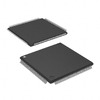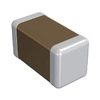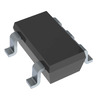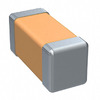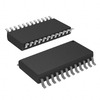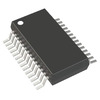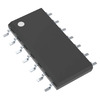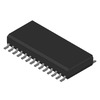Using the BC547 Transistor in Amplification and Switching Circuits
The BC547 transistor is a commonly used electronic component known for its versatility and reliability. It’s widely utilized in various applications, from switching and amplification to motor control and audio projects. In this article, we’ll explore the key features of the BC547, its specifications, and how it’s applied in different circuits. Whether you’re an electronics hobbyist or an engineer, understanding the BC547’s characteristics can help you make informed decisions when designing or troubleshooting circuits. Let’s dive into its structure, operation, and why it’s a go-to transistor for many low-power electronic projects.Catalog

Introduction to BC547 Transistor
The BC547 is a versatile NPN bipolar junction transistor (BJT) commonly used in electronic circuits. It has a current gain (hFE) ranging from 110 to 800, making it suitable for various low-power applications. It can handle up to 45V of collector-emitter voltage and 100mA of current, making it ideal for both amplification and switching purposes. Its compact TO-92 package design is perfect for easy integration into breadboards and circuit boards, simplifying prototype development and small-scale projects. Additionally, the BC547’s low noise and stable thermal performance make it highly reliable for audio and signal processing tasks.
In practical applications, the BC547 is a popular choice in educational electronics kits due to its reliability and affordability, providing a solid foundation for beginners. Its low noise feature is particularly useful in sensitive audio projects, where it helps maintain sound clarity. Hobbyists often use it in pre-amplifier circuits to ensure good sound quality. In industrial contexts, its stable thermal profile adds durability and ensures consistent circuit performance, even under varying temperature conditions.
When choosing transistors for circuit designs, it's essential to understand parameters like gain, voltage, and current capabilities. The BC547’s adaptability makes it a popular option for both engineers and educators, combining simplicity with versatility. It serves as a bridge between theoretical learning and practical implementation, making it a go-to component in numerous projects where experimentation and innovation are key.
Key Characteristics
Type and Configuration
The BC547 is an NPN bipolar junction transistor with an n-p-n semiconductor structure. This design allows it to function well in both amplification and switching applications, making it versatile for different uses. It’s commonly used in consumer electronics and industrial equipment, where its reliability and efficiency are appreciated.
Maximum Ratings
• Collector-Emitter Voltage: 45V
This value indicates the highest voltage that can be applied between the collector and the emitter terminals without causing damage. Exceeding this voltage could lead to breakdown and failure of the transistor. The 45V limit allows the BC547 to handle moderate voltage levels, making it suitable for a variety of general-purpose applications.
• Collector-Base Voltage: 50V
The maximum collector-base voltage sets the upper limit of the voltage that can be applied between the collector and base terminals. With a limit of 50V, the transistor is protected against high-voltage surges that might otherwise degrade its performance.
• Emitter-Base Voltage: 6V
This rating shows the maximum voltage difference allowed between the emitter and base terminals. Keeping the voltage within this limit ensures that the emitter-base junction doesn’t get damaged, which is essential for maintaining the transistor’s switching and amplification capabilities.
• Collector Current Capacity: Up to 100mA
The maximum collector current rating specifies the highest current that can flow through the collector terminal. A current capacity of up to 100mA enables the BC547 to handle low to moderate current loads efficiently. If this current is exceeded, the transistor may overheat or get damaged, so it's typically used in circuits with low power requirements.
These specifications are suitable for low-current applications. Engineers often use these parameters to design circuits that prioritize both durability and efficiency in a range of settings.
Current Gain
The BC547 transistor has a wide current gain range, spanning from 110 to 800. This means it can take a small input current and amplify it into a much larger output current. In simpler terms, it acts as a powerful magnifier for electrical signals. This feature is particularly useful in circuits where precise control over the current is needed, such as in signal processing or low-power applications. The flexibility in current gain makes the BC547 suitable for different types of projects, from simple electronic circuits to more complex setups where accuracy is required.
Low Noise
One of the standout features of the BC547 is its low noise operation. When it comes to amplifying signals, unwanted noise can distort the output and reduce clarity. However, the BC547 minimizes these disruptions, ensuring that the signals it processes remain clean and clear. This low noise characteristic makes it a popular choice for devices like radios, microphones, and other audio equipment, where maintaining high sound quality is key. It’s also beneficial in communication devices where clear signal transmission is essential.
Temperature Range
The BC547 is built to function smoothly across a broad temperature range, from -55°C to +150°C. This means it can handle extreme cold as well as high heat without losing its effectiveness. Such versatility ensures that the transistor works reliably in different environments, whether it’s an outdoor setting exposed to cold temperatures or a device that generates heat during operation. This durability makes it ideal for use in conditions where temperature fluctuations are common or when consistent performance is needed regardless of the surrounding environment.
Thermal Efficiency
Efficient heat management is crucial for any electronic component, and the BC547 excels in this area thanks to its low thermal resistance. This means it can effectively dissipate the heat it generates during operation, preventing overheating and ensuring stable performance. The transistor’s ability to manage heat not only keeps it functioning reliably over long periods but also extends its lifespan. This thermal efficiency makes the BC547 a solid choice for circuits that operate continuously or for applications where minimizing heat build-up is beneficial.
Understanding the BC547's Functionality
The BC547 is an NPN Bipolar Junction Transistor (BJT) that controls current flow through its emitter, base, and collector by managing electron movement across its three semiconductor layers.
Structure and Doping
The BC547 is built with the following structure:
• An N-type emitter with a high density of electrons.
• A thin P-type base.
• An N-type collector with moderate electron density.
This configuration allows for efficient electron transition between the layers, which influences the transistor’s performance. Understanding how the doping levels affect these layers is useful for adjusting the transistor’s behavior in various circuit applications.
Biasing
Proper biasing controls how the BC547 operates. Forward bias on the emitter-base junction promotes electron flow into the base, while reverse bias on the collector-base junction expands the depletion zone, regulating electron movement. Adjusting the biasing conditions can help improve the transistor’s reliability in different applications.
Modes of Operation
The BC547 can work in different modes:
• Active mode is used for signal amplification,
• Saturation mode allows maximum current flow,
• Cut-off mode stops current flow completely.
Each mode has its benefits, such as maximizing gain or conserving power, which engineers select based on the requirements of a specific circuit.
Current Flow and Amplification
When the BC547 is correctly biased, electrons move from the emitter to the collector, resulting in current amplification. This is particularly useful in signal processing, where small input signals need to be amplified to a desired level. Fine-tuning the biasing can enhance amplification performance.
Switching Behavior
By adjusting the base current, the transistor can switch between saturation and cut-off modes, which is useful for switching applications. This ability to control current flow is often utilized in digital circuits. A good understanding of this switching behavior helps in designing efficient and adaptable systems.
Diverse Applications
Switching
The BC547 transistor is widely used as a switch in various circuits. It controls devices by turning them on or off, depending on the current it receives. This makes it highly effective for activating LEDs, operating low-power relays, or controlling other small electronic components. Whether in simple hobby projects or more complex systems, the BC547’s ability to act as a reliable switch allows for efficient and smooth operation in a range of environments.
Amplification
One of the BC547’s main strengths is its ability to amplify small electrical signals, thanks to its high current gain. This makes it a popular choice for audio and radio frequency (RF) circuits. In audio applications, it can increase the volume and clarity of sound signals, improving the overall listening experience. In RF applications, it helps strengthen weak radio signals, making communication more effective. The transistor’s amplifying properties are useful wherever small signals need a boost to become stronger and clearer.
Oscillators and Generators
The BC547 can also be configured to generate various waveforms, making it a vital component in oscillators and signal generators. These waveforms are used in a variety of applications, such as communication systems and signal processing. By creating stable and consistent frequencies, the BC547 supports frequency synthesis and waveform shaping. This flexibility makes it a valuable tool for developing modern telecommunications systems and electronic devices that rely on precise signal generation.
Voltage Regulation
The BC547 is often found in voltage regulation circuits where it helps maintain a stable output voltage. This stable performance ensures that the devices connected to the circuit receive a consistent supply of power. By preventing sudden voltage spikes or drops, the BC547 protects sensitive components, making it especially useful in power supply systems for electronics that require consistent voltage levels to function correctly.
Current Limiting
In circuits where it’s necessary to control the amount of current flowing through, the BC547 excels at limiting current to safe levels. This function is critical in preventing damage to sensitive components that can be harmed by excessive current. It’s particularly useful in battery charging systems, where overcurrent protection is needed to ensure safe charging, and in power management circuits that protect devices from potential electrical damage.
Temperature Sensing
The BC547 is also used in temperature control systems. It can detect changes in temperature and respond accordingly, such as activating a fan or heater when needed. This capability makes it useful for maintaining stable environments in industrial applications, like climate control systems in factories or labs, where keeping temperatures within a specific range is crucial for equipment operation or product quality.
Digital Logic
In digital circuits, the BC547 plays a role in logic operations, thanks to its low power consumption and fast switching capabilities. It helps create compact, efficient digital systems, which are ideal for applications like microcontrollers and digital logic gates. This makes it perfect for building modern electronic devices that require fast processing and low energy use.
Motor Control
The BC547 is often used in motor control circuits, especially for small DC motors found in robotics, toys, and automated systems. By adjusting the base current, the transistor can control the motor’s speed and direction, providing a simple and effective way to manage motor functions. This makes it an excellent choice for projects that require precise movement control, whether it’s a toy car or a robot arm.
Datasheet PDF
BC847 Datasheets:
About us
ALLELCO LIMITED
Read more
Quick inquiry
Please send an inquiry, we will respond immediately.

MPS2222A Transistor: A Complete Overview
on October 1th

LM301an OP-ASP: PIN Configuration and Specifications
on October 1th
Popular Posts
-

Understanding Power Supply Voltages in Electronics VCC, VDD, VEE, VSS, and GND
on June 13th 24117
-

USB-C Pinout and Features
on June 13th 21243
-

The Ultimate Guide to Wire Color Codes in Modern Electrical Systems
on January 1th 17424
-

TL494 Current-Mode PWM Controller IC
on January 1th 14714
-

Current Divider Circuits and Effective Use of the Divider Formula
on January 1th 13607
-

FET (Field Effect Transistor) Circuit Symbols
Field-Effect Transistors (FETs) are widely used in modern electronics and are found in everything from simple devices to complex digital systems. To work with these transistors effectively, it's helpful to understand the symbols that represent different types of FETs. These symbols do more than just show what the transistors look like—they also provide information about how each transistor works ...on January 1th 13393
-

Quality (Q) Factor: Equations and Applications
The quality factor, or 'Q', is important when checking how well inductors and resonators work in electronic systems that use radio frequencies (RF). 'Q' measures how well a circuit minimizes energy loss and impacts the range of frequencies the system can handle around its main frequency. In systems with inductors, capacitors, and tuned circuits, a higher 'Q' means the circuit focuses more on a spe...on January 1th 13362
-

Understanding and Building Op-Amp Based Peak Detectors
In the world of electronic circuit design, peak detectors are key tools for accurately analyzing and processing signal strengths. These circuits are designed to find and keep the highest signal amplitude, making sure the peak value is precisely captured and held as needed. Peak detectors are important in many fields, from improving audio quality in communication systems to aiding medical diagnoses...on June 13th 12471
-

LM741 Op-Amp: Features, Specifications, and Applications
The LM741 op-amp is a popular and flexible electronic component. This article goes over the pin layout, functions, specs, and different ways the LM741 can be used, while also comparing it to similar models like the LM358.Catalog1. What Is the LM741 Op-Amp?2. The LM741 Pin Configuration3. The LM741 Pin Functions4. Specifications of the LM7415. Features of LM7416. LM741 Circuit Applications7. LM741 ...on June 13th 11998
-

ST-LINK/V2: Pinout, Specifications, and Datasheet
This article takes you through the ST-LINK/V2, a well-regarded tool that amplifies connectivity and functionality. Key topics will cover its pinout configuration, delve into its 3D model, and spotlight specifications. Such understanding expands the horizons of STM microcontrollers in diverse applications. By grasping these interfaces and tools, you can transform embedded systems, opening doors to ...on January 1th 11559







